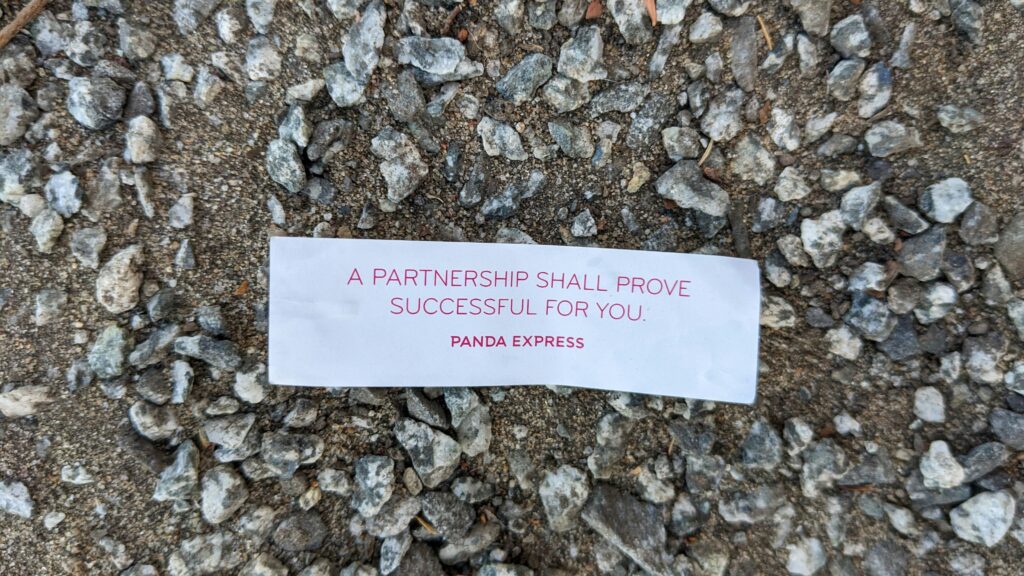Why Monetization Matters Now More Than Ever
Vlogging isn’t just a creative outlet anymore—it’s a business, whether you planned for that or not. What used to be weekend projects and selfie-stick diaries has matured into something more structured. Creators are building careers, hiring teams, and managing revenue streams with the mindset of small business owners. The passion is still there, but now it’s paired with strategy.
Banking on just one income stream—like ad revenue—is a rookie mistake in 2024. Algorithms shift. CPMs drop. Platform policies change on a dime. One tweak to YouTube’s rules can wipe out half your earnings overnight. That’s why creators are spreading out their efforts: sponsorships, merch, paid communities, digital products. Multiple streams = more freedom, more control.
The first move? Stop thinking like a hobbyist. Start thinking like a brand. That means dialing in your visual identity, crafting your messaging, and building consistency across every platform. Treat your channel like a business from day one, and when the money comes, you’ll be ready to scale instead of scramble.
Ad Revenue: The Classic Foundation
For most vloggers, monetization starts with the YouTube Partner Program (YPP). Once you meet the basic requirements—1,000 subscribers and 4,000 watch hours in the past 12 months—you can start earning a share of the ad revenue on your videos. Simple in theory. In practice, payout depends on a few unskippable variables.
First, niche matters. Finance, tech, and business channels often get higher CPMs (cost per thousand views) compared to lifestyle or entertainment. Why? Advertisers pay more to reach people ready to spend. Watch time is the second pillar. If people stick around and binge your content, that’s gold. YouTube’s algorithm notices, advertisers notice, and your payout climbs. Bottom line: longer, high-retention videos in profitable niches make more money—even if your total views are modest.
Still, YouTube isn’t your only option. Platforms like Rumble or Twitch offer alternative (and sometimes less crowded) monetization paths. Rumble is gaining traction for creators looking for fewer content restrictions and better revenue splits. Twitch, while known for gaming, is expanding into IRL and creative content—with built-in tools for subs, tips, and sponsorships.
In 2024, diversifying where your content lives is smart. YouTube is foundational—but not final. Look at analytics, test new platforms, and follow where your audience actually engages. Ad revenue isn’t disappearing—it just needs a broader strategy to stay sustainable.
Brand Sponsorships that Actually Pay
Sponsorships aren’t reserved for mega-creators. In 2024, brands care less about your sub count and more about audience trust. If you’ve built even a small but loyal viewer base, you’re already in the game. Engagement rate, watch time, and audience alignment matter more than raw numbers. They want proof that when you talk, people listen—and click.
Start by tightening your niche. The more dialed-in your content is, the easier it is for brands to see the relevance. A skincare brand isn’t looking for any lifestyle vlogger; it’s looking for the one with consistent views from skincare lovers who stick around for the full video.
When pitching, skip the fluff. Show them the data they actually care about: average views per video, engagement percentages, audience demographics, and past examples of product mentions that got traction. Be direct, clear, and realistic. And make your ask specific—what format, what deliverables, and what results they can expect. Tie their goals to your value.
You don’t need to wait for an email to land in your inbox. Outreach works—especially when it’s personal. Study the brand, know their campaigns, and pitch something that aligns. A thoughtful message beats a flashy media kit every time.
For a sharper edge, dig into Securing Brand Partnerships and Sponsorships.
Affiliate Marketing Built on Trust
Affiliate marketing isn’t just slapping a link in your description and hoping for clicks. If the product doesn’t make sense for your audience, they won’t bite—and worse, you’ll lose credibility. The rule is simple: promote only what you’d recommend even if there were no payout. That alignment builds trust, and trust drives conversions over time.
Where you place your links matters, too. Descriptions are obvious real estate, but they’re not the only path. Pinning a comment often draws more eyeballs. On-screen overlays during product mentions? Even better. Just don’t overdo it. You want organic placement, not desperate clutter.
As for platforms, creators tend to lean toward Amazon Associates for general reach, RewardStyle for style/lifestyle picks, and Impact for brands with heft. Each has its quirks, so test what aligns with your niche—and track your results. This isn’t set-it-and-forget-it. The best affiliate channels are tuned, tested, and constantly refined.
Selling Your Own Stuff
When you control the product, you control the profit. More vloggers are pulling back from relying solely on outside platforms or partners, and instead leaning into what they can sell directly—on their terms.
Merch is the go-to starting point. Print-on-demand services keep it simple: no inventory, no upfront cost. But in 2024, creators looking to stand out are pushing further with custom drops—limited runs, high-quality materials, and on-brand designs that actually feel worth buying. It’s less about slapping a logo on a T-shirt and more about creating something the audience wants to wear.
Digital products are next-level because they scale without the headaches of shipping. Think photo filters, video LUTs, Notion templates, or niche guides—whatever boosts your audience’s creativity or solves a problem they’re facing. Online courses are profitable too, especially if you’ve got a how-to angle baked into your content already.
But the real magic? Repeat buyers. And for that, email is still king. Collect addresses early. Use exclusivity, early access, or subscriber-only drops to keep people coming back. It’s a quiet engine behind the scenes—a steady sales tool most channels aren’t using enough.
Selling your own products means independence. It’s not flashy, but it works.
Crowdfunding and Community Support
Ad money might keep the lights on, but real loyalty pays the bills. Platforms like Patreon, Buy Me a Coffee, and YouTube’s membership features let your most committed viewers chip in—not out of obligation, but because they believe in your work. The key? Give them reasons to.
Perks don’t have to be flashy or expensive. A behind-the-scenes vlog here, an unfiltered Q&A there, maybe a monthly shoutout—these small touches stack up. What matters is creating a sense of inclusion. Supporters want to feel like insiders, like they’re not just watching your story but actively helping write it.
This model works because the psychology runs deep. People like to back creators they trust, creators who show up consistently and respond with honesty. When you open the curtain just enough, you turn a passive viewer into a patron. Not just funding your channel—but rooting for your future.
Livestream Commerce and Real-Time Sales
Live shopping isn’t just a flash trend—it’s becoming one of the fastest-growing ways vloggers generate real revenue. Think QVC, but raw, personal, and mobile-first. Viewers don’t just watch; they interact, ask questions, and buy while you demo the product in real time. When it’s done right, it feels less like a sales pitch and more like hanging out with someone you trust who just happens to be showing you something cool.
YouTube Live has doubled down on this format, adding integrations that let viewers purchase without ever leaving the stream. Amazon Live takes it a step further, baking commerce into the core experience with real-time product carousels. Instagram’s Live feature still holds weight, especially with creator-buyer-friendly updates that streamline checkout.
New to the format? Start simple. First, pick one product—ideally something you use and love. Then build a loose script: hit key features, show it in real use, share a quick story, and be ready to improvise. Use pinned comments or overlays to share buying links. Promote it ahead of time on your other channels. Post-stream, don’t waste that content. Chop it into clips, drive post-show traffic to still-active links, and thank your buyers publicly. Every live is a sales event, content gem, and touchpoint in one.
Live commerce isn’t about yelling “buy now.” It’s about making discovery fun, useful, and easy to act on in the moment. That’s how you move from vlogger to closer.
Quick Tips to Boost Every Revenue Stream
Consistency and clarity aren’t just nice-to-haves—they’re deal-makers. Audiences reward creators they can rely on. Predictable upload schedules, a clear niche, and a coherent voice signal professionalism. That trust translates directly into more clicks, better retention, and revenue opportunities that actually stick.
Next, stop chasing volume. Quantity without depth burns everyone out. Focus on delivering real value to your audience—understand what they care about, solve their problems, and stay human. A loyal core of engaged viewers is far more profitable long-term than drive-by traffic from viral one-offs.
Finally: track everything. Flying blind leaves money on the table. Use tools like YouTube Analytics, affiliate dashboards, Patreon reports, and even spreadsheets to monitor where money’s coming from—and what’s underperforming. You don’t need to be a data wizard, just disciplined enough to look, learn, and adjust.
Wrap-Up: Build, Diversify, Repeat
There’s no perfect formula to monetize a vlog channel—and that’s a good thing. What works for one creator might flop for another. Success in 2024 means being willing to test different revenue paths, track the results, and double down on what clicks. It’s more lab coat than lottery.
Smaller channels should take that as motivation. You don’t need a million subs to make real money. With the right niche, tight-knit community, and smart monetization blend—affiliate links here, a small merch drop there, maybe a Patreon on the side—you can build solid income. Sometimes, fewer but more invested fans can mean bigger returns.
The takeaway? Stay sharp and flexible. Keep listening to your audience, because they’ll tell you where the value is. Try a new tool, pivot when something underperforms, and most of all—keep showing up with genuine content. In an evolving landscape, the only constant is your ability to adapt.


 Aaron Cloutieristics brings a sharp eye for digital innovation to vlogedgevault With a strong background in tech-driven content creation, Aaron focuses on exploring emerging tools, platforms, and strategies that shape the future of vlogging and online media.
Aaron Cloutieristics brings a sharp eye for digital innovation to vlogedgevault With a strong background in tech-driven content creation, Aaron focuses on exploring emerging tools, platforms, and strategies that shape the future of vlogging and online media.

